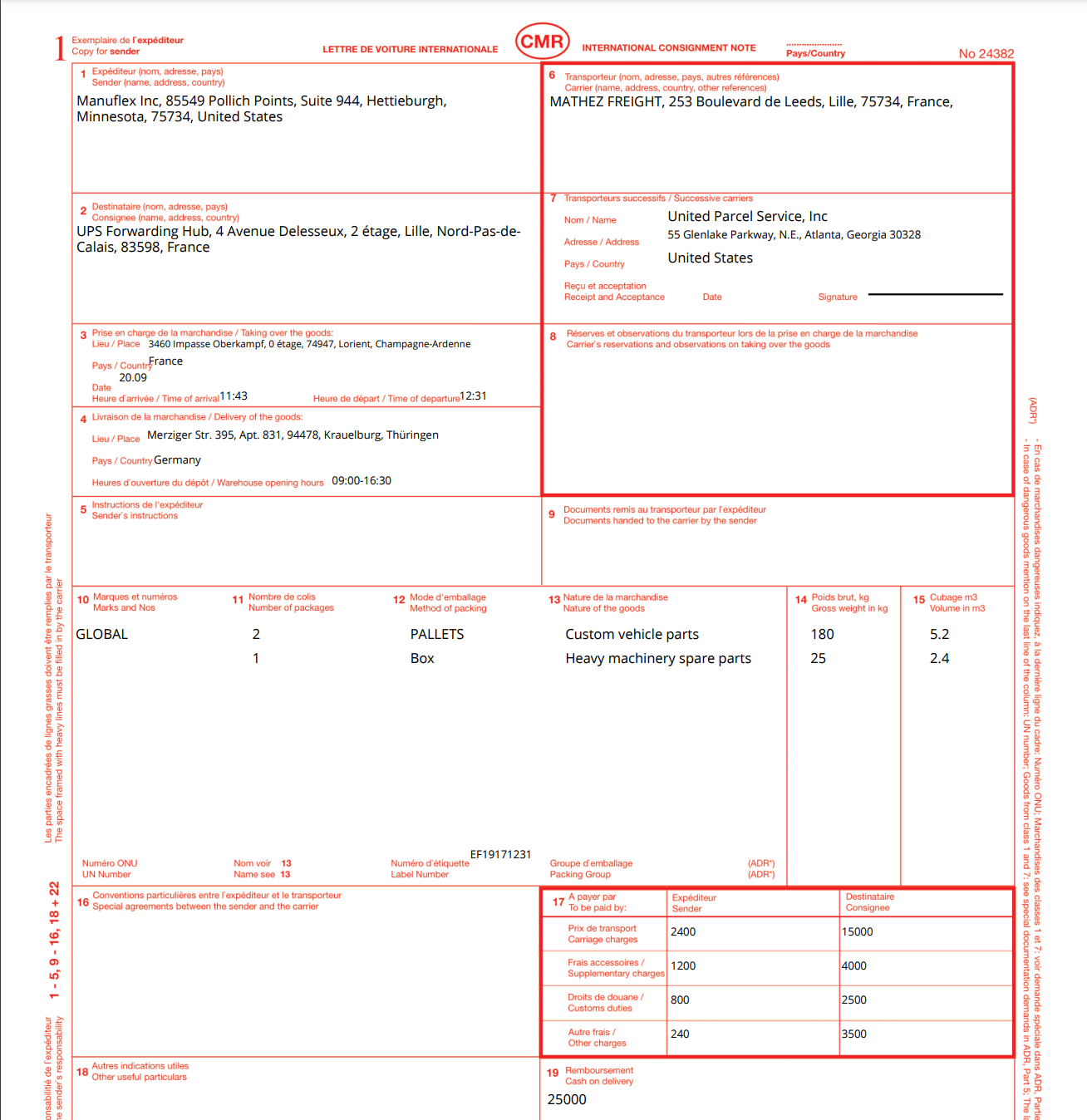CMR (or CMR consignment note), which first came to use in 1956 in Switzerland, is a freight contract and a transport document for goods. CMR is mandatory for delivering goods from one country to another as it is used to standardize the conditions of international road transportation. As of January 2022, the CMR convention has received formal approval from 58 countries. It’s good to note that the shipper must fill out the CMR.
The documents should always be present when the shipment is being transported.
CMR should be printed in 4 copies and in 4 different colours:
- one copy for the sender in red;
- one copy for the consignee in blue (which will be given to by the carrier);
- one copy for the carrier in green
- one copy for the administration in black
All copies must include the same information.
CMR convention includes cargo insurance. That means if the shipment is either lost or damaged, the shipment is covered up to 8,33 SDR (or approximately 10€/kg gross weight). SDR means Special Drawing Rights, which is not a currency itself, but its value is based on five currencies worldwide – Euro, US dollar, Chinese renminbi, Japanese yen and British pound sterling. At the moment, 1 SDR = 1,24€ (checked 29/08/2023).
CMR should include:
- Sender’s information – name, address and country;
- Consignee’s information – name, address and country;
- Place and date when the carrier has picked up the goods. It is advised that the carrier would write down the arrival time to the loading and departure time. If a truck should wait for the loading longer due to the shipper’s mistake, these notes can help the carrier get additional payment;
- The place of delivery of the goods has to contain the full address. It is recommended to add the contact information and opening times of the delivery place;
- Instructions from the sender. If necessary, the sender should fill out the box with necessary instructions, for example, information about customs procedures, no reloading, etc.;
- Information about the carrier company;
- Information about additional carriers, if the transportation has been carried out by several carriers;
- Carriers reservations when taking over the goods. Driver must mark down the quantity of the packages, their identifying marks, numbers and shipment packaging;
- List of the documents that have been handed over from shipper to carrier. These could be packing lists, loading lists, dangerous goods documents, etc;
- Box 10-15. Description of the goods: markings on the shipment, number of packages, the shipment description, weight and volume of the shipment. If the shipment is dangerous goods, then it also must be marked on the CMR;
- Box 16. Agreements between carrier and shipper, for example, agreed time frame when the shipment must be delivered, if the shipment can be reloaded, etc;
- Box 17. Indications about the payment of the transportation, which side of the transportation has to carry out the payment;
- Box 18. Other valuable details, which can be the truck plate number of the trucks, the net weight of the shipment, and other documents that have been added during the transportation.
- Box 19. Amount of the reimbursement, which has to be given to the carrier by the consignee.
- Box 21. The date and place when the CMR was filled out
- Box 22. Signature and the stamp of the sender. It’s good to mark the date and time when the shipment was given over to the carrier
- Box 23. Signature and the stamp of the carrier.
Box 24. Signature and the stamp of the consignee. It must indicate the date and the time, when the truck arrived to unloading and the time when truck left the unloading place.
In summary, the CMR Convention offers benefits such as legal clarity, uniformity of law, liability regulation, standardized documentation, efficient dispute resolution, trade facilitation, protection of interests, increased trust, and compliance with international standards. These advantages contribute to the smoother and more reliable international transportation of goods by road, benefiting businesses engaged in cross-border trade.
